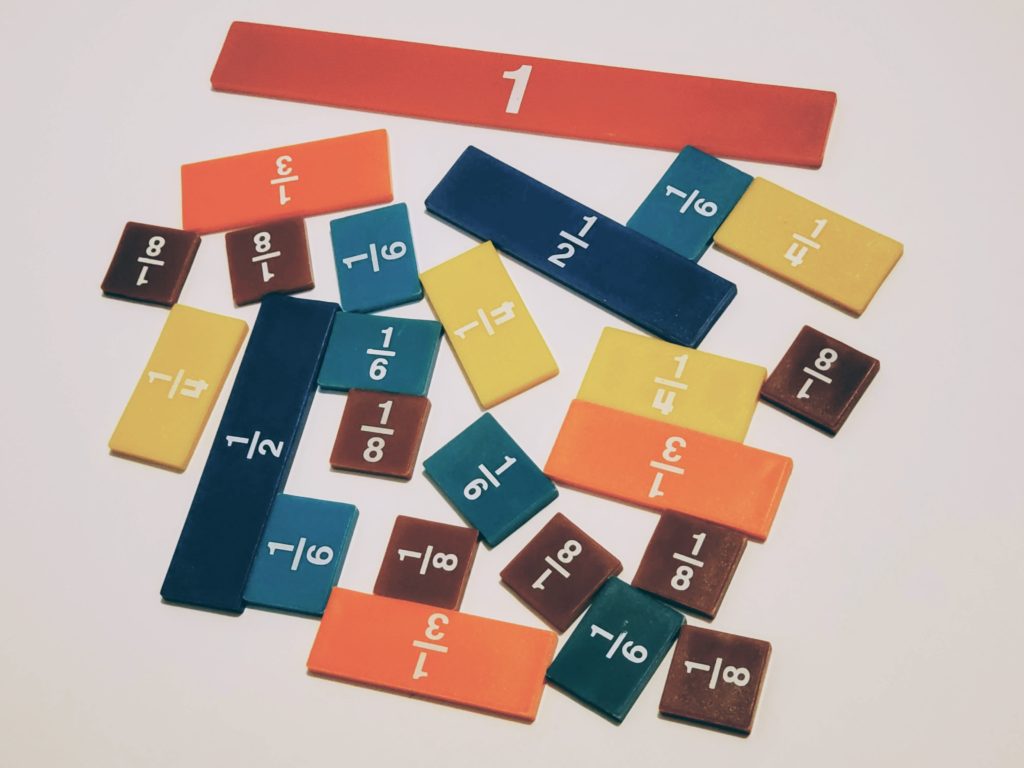- Play Fraction Dominoes
- Use Fraction Tiles
- Explore Fractions on a Number Line
Fractions are one of the more difficult math concepts to teach and learn in elementary school. The foundation of fractions begins in the first grade with students learning about equal shares in shapes. It is in Third Grade (CCSS) where students are introduced to fractions as numbers. They also gain an understanding of the meaning of related math terms such as numerator, denominator, unit fractions, one-fourth, three-sixths, five-eighths, etc.
There are many ways that students should be exposed to representations of fractions. This can be done with manipulatives, pictures, drawings, number lines, and in numeral form.
Below are three ways that students can practice identifying fractions through concrete models, picture representations, and with number lines.
I want to share for some, remind for others, that the Common Core State Standards, and many other states, recommends that when introducing fractions to Third graders in numeral form (½, 2/4, ⅜, etc.) to stick with denominators that include 2, 3, 4, 6, and 8 (halves, thirds, fourths, sixths, and eighths). Fifths, tenths, twelfths and hundredths get added on in Fourth grade.
Disclosure: This post may contain affiliate links. This means that I can earn a commission if you choose to make a purchase through one of my links. This is at no cost to you. As an Amazon Associate I earn from qualifying purchases.
Fraction Dominoes
Games that use fractions, such as fraction dominoes are a great way for students to practice seeing a visual model of specific fractions and having to either read, write, or say the name of the fractions.
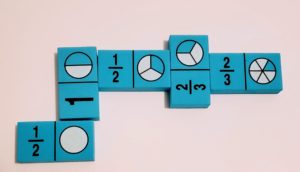
With fraction dominoes similar to regular dominoes the object of the game is to match the end of the dominoes that you have to dominoes that have already been played in the game.
In regular dominoes, the numbers included on the domino pieces are whole numbers made by a series of dots similar to what you see on dice.
Visual graphic models of fractions and fractions in numeral form are included in this version of dominoes.
The first player to get rid of all of their dominoes wins.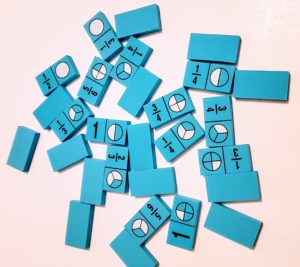
This is great fraction practice for students just learning about fractions (or even as a review). It has the visual graphics of fractions as area (covering a space) and it has fractions in numeral form.
Students can play in a small group, with a partner, or even independently.
Check out how to get your own set of fraction dominoes here or here.
Fraction Tiles
Using manipulatives while exploring fractions is very important to help students build onto the foundation that they have so far about equal shares of a shape.
One popular option is to use Fraction Tiles.
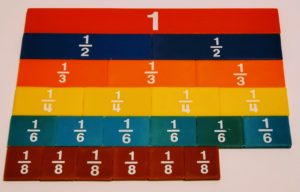
Fraction tiles are specific to manipulatives that represent length using fractions. As I use the term fraction tiles in this post, I am also including similar manipulatives such as fraction circles, fraction squares, and even fraction towers.
They are great for identifying what a fraction is, based on the size of the whole and how many of those pieces are needed to make up the whole.
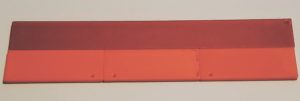
I like to use them without the numbers sometimes so that students have to figure out what the fraction is by looking at the size of the piece. They won’t be able to solely depend on the label of the fraction that is on there. You can turn the fractions over to the blank side or if you think your students might sneak and look at the labels, purchase fraction tiles with no labels on them.
These manipulatives will come in very handy later on when exploring fraction equivalence, comparing fractions, and moving into solving operations with fraction numbers.
For more information on each of these manipulatives, click on each link below. When exploring each item, make sure to determine if you want to see a class set or a single set.
Fractions on a Number Line
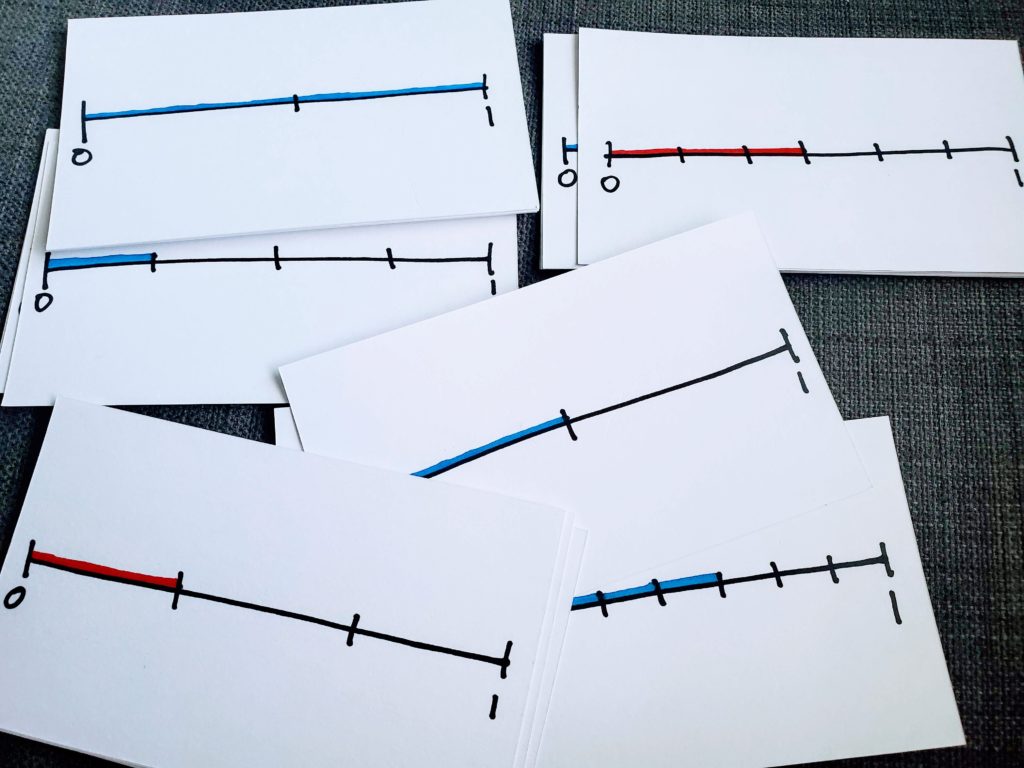
Again, manipulatives are so important to use when building on the foundation of understanding fractions. Moving on from those concrete models, you want students to be able to see and represent fractions visually, specifically on a number line. The number line can be given to them, but it is also something they can draw themselves.
Something to use with your students is a simple activity of identifying fractions on a number line using index cards.
All you need for this activity are a pack of index cards and markers.
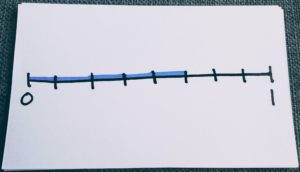
Draw a number line on each index card that represents a distance between 0 and 1(you can also go beyond 1 when students are ready). Make tick marks to represent how the number line can be partitioned. Highlight the specific fraction that you want the students to see that is represented on the number line. You can also draw a point to have them say or write what fraction is represented at that mark.
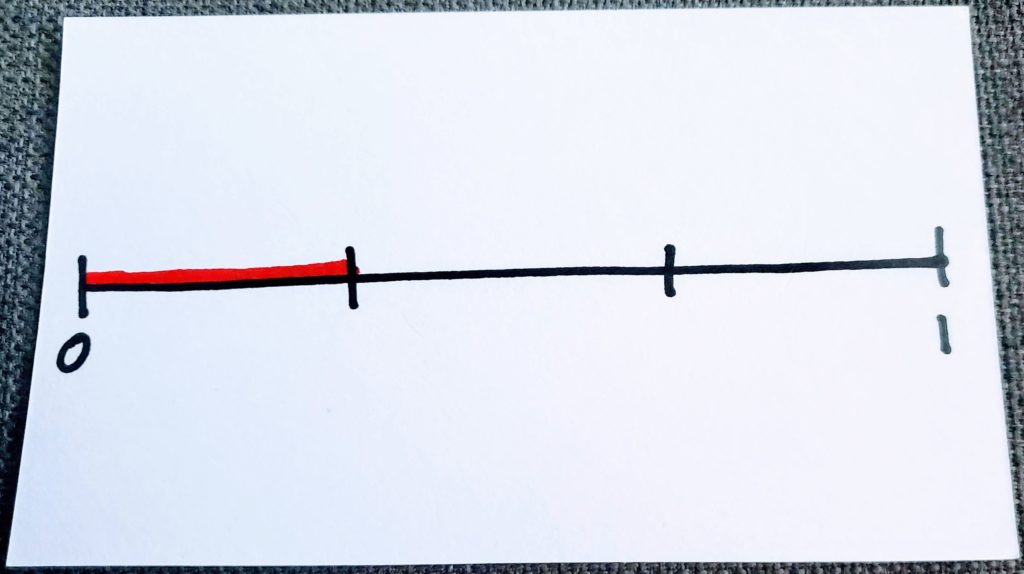
Go through the index cards as a class for 1 – 2 minutes at the start or end of a lesson. You can practice during transition time. In centers, have students play in a group, with a partner or independently.
These are three easy ways to give your students opportunities to practice identifying fractions. The visual models reinforce their size or amount is when given the fraction name or seeing it in numeral form.
Have you used any of these activities in your classroom before? If so, which ones and how did it help your students? If you have not, which one are you excited to try first?

